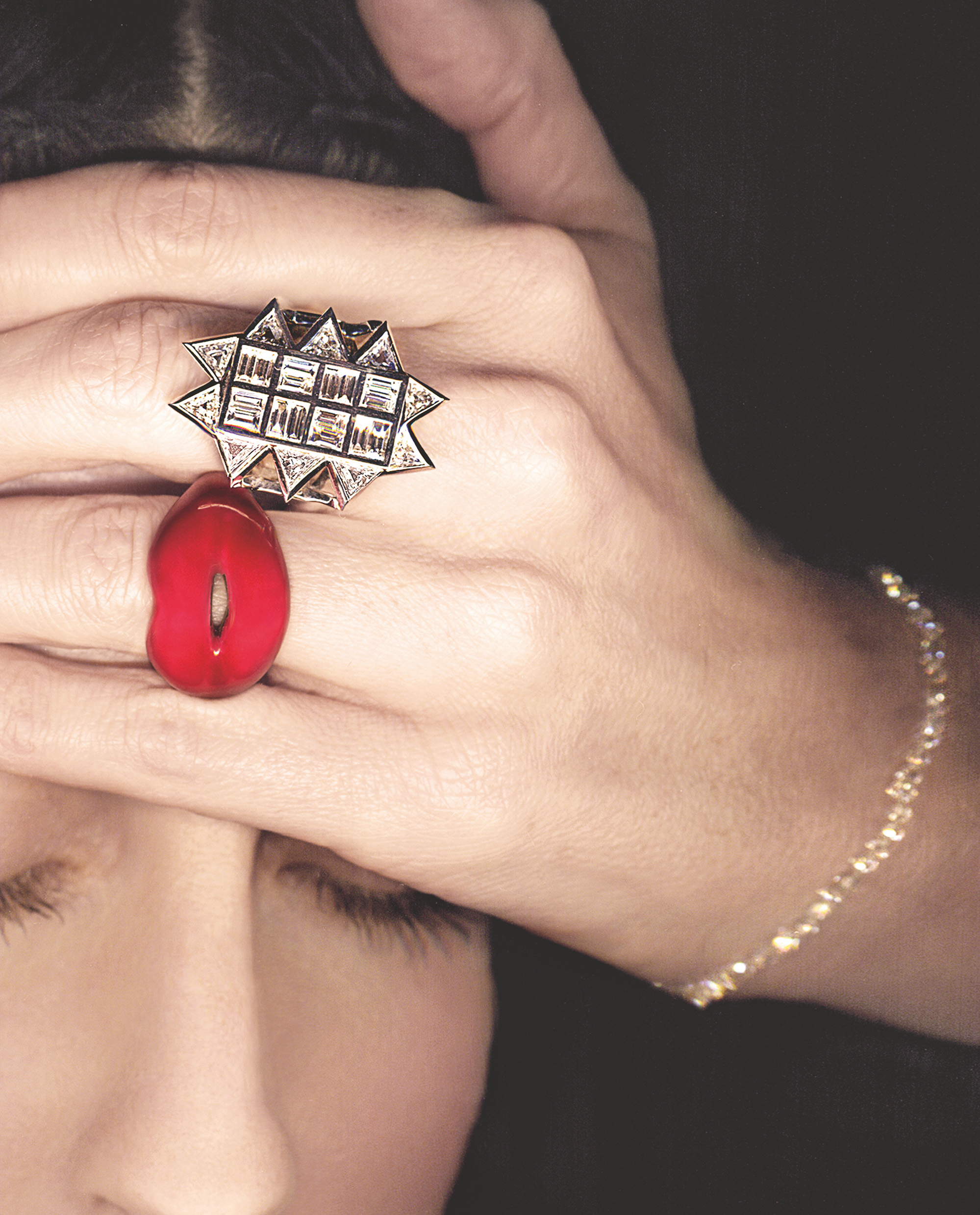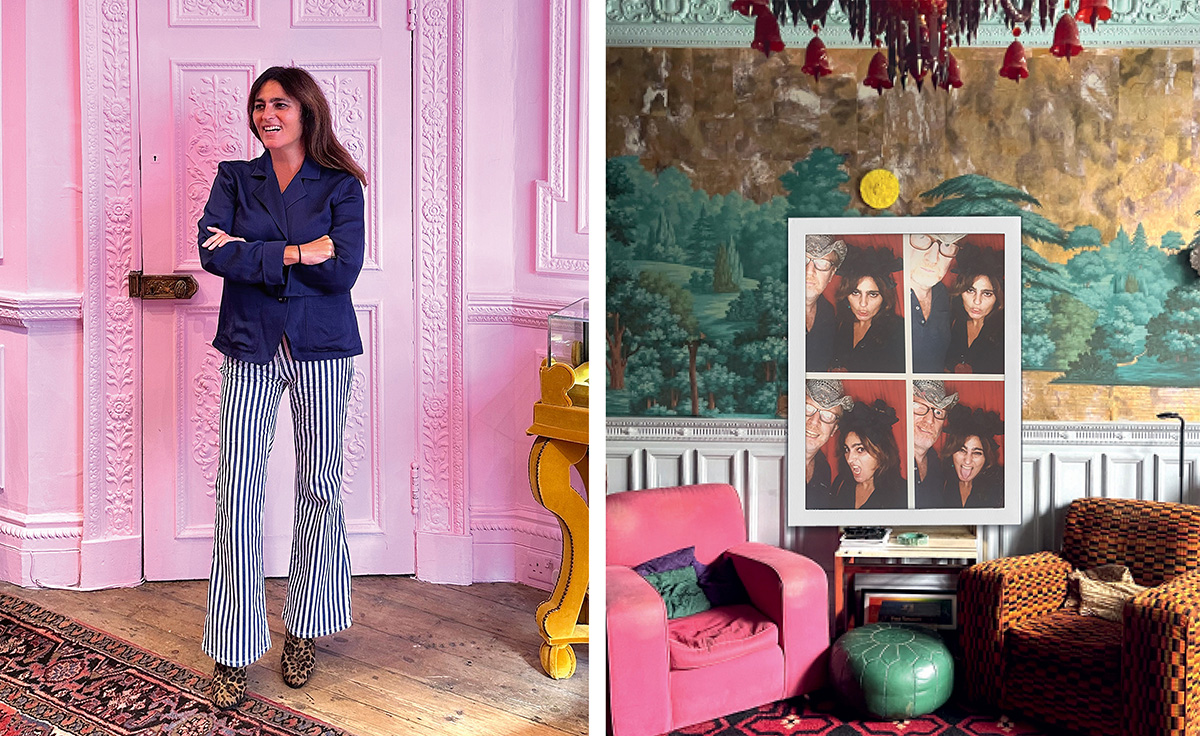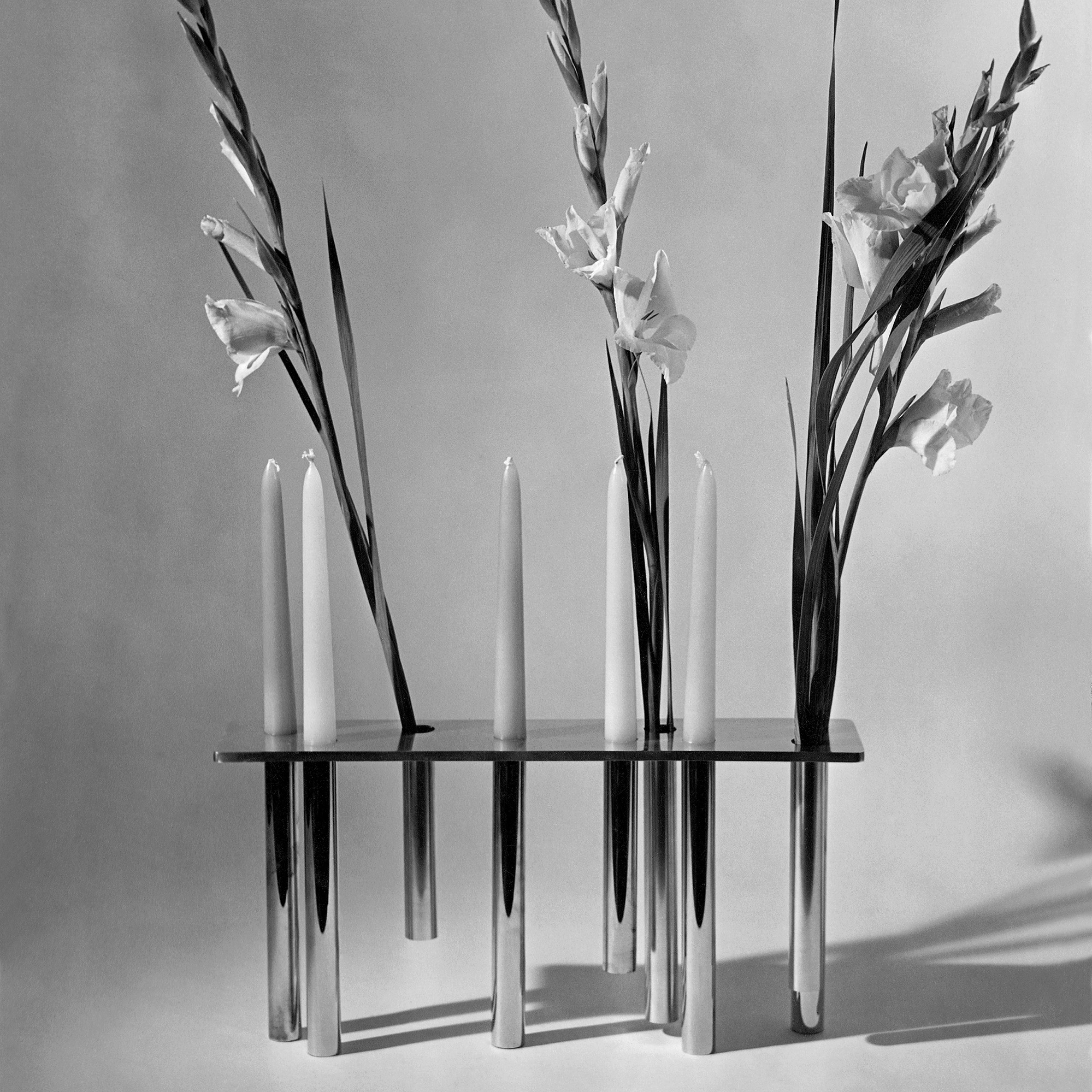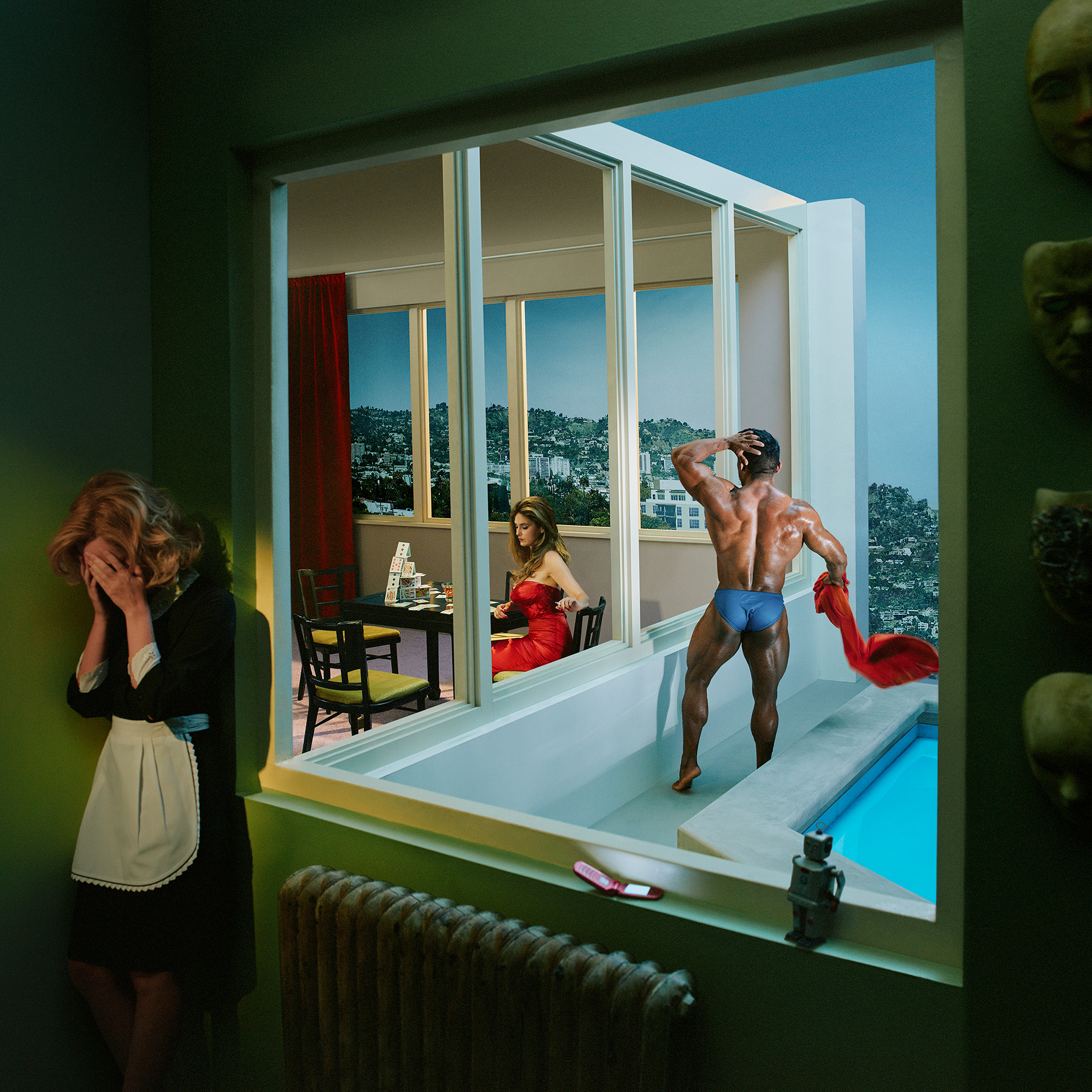Mark Your Calendars: The Grand Tourist 2026 Guide to Art and Design Fairs
A great design or art fair sets the tone for the year, defines the conversations, and points to where taste is headed. These are the fairs defining 2026. Save the dates.

Welcome to The Curator, a newsletter companion to The Grand Tourist with Dan Rubinstein podcast. Sign up to get added to the list. Have news to share? Reach us at hello@thegrandtourist.net.
London-based jewelry designer Solange Azagury-Partridge emerged in the mid-1990s as part of what is now known as London’s “Cool Britannia” period. And in her new book, “Solange: Jewellery for Chromantics,” there’s a warm reminder of a 1996 essay by Vogue’s Hamish Bowles on the movement, where he cites a restless “anything-goes atmosphere and lack of snobbishness” in British fashion, fine art, theater, and music of the time. One “ultra hip” Notting Hill talent was singled out, its resident jeweler, “the sloe-eyed jeweler Solange Azagury-Partridge holding court in her jewel box.”
The nonchalant swagger of this language student turned designer who had simply decided to design her own engagement ring (a sizable uncut diamond teetering on the brink of a thick gold band), thus setting a trend, was right on point. “Sooner or later every woman wakes up wanting diamonds,” she said at the time. As orders for unique pieces kept coming in, the Solange Azagury-Partridge brand was born. By 2001, Tom Ford, during his Gucci era, sought her out to become creative director of fabled jewelry house Boucheron, where she stayed until 2004.
Today, Azagury-Partridge’s darkly humorous, expertly created jewels are found in the permanent collections of the Victoria and Albert Museum in London and the Musée des Arts Décoratifs in Paris, while the designer presides over a suite of buildings on one of West London’s most charming Victorian thoroughfares, Chilworth Street. It’s here that aficionados, collectors, and now, thanks to her accessibly priced Hotlips by Solange line, a new era of jewelry lovers flock. What better time, then, to launch her first book, dedicated to three defining decades of a career in perpetual motion. We spoke with the designer about precious problems, loving kisses, and diamonds in the rough.
It’s a 30-year history, yet you decided not to do chronological chapters.
I thought that would feel a bit clunky, as it’s how I do my collection booklets. Each time I create a new collection, I send one out. It’s necessarily formulaic. But it was when I was putting the book together that I realized I kept returning to the same themes. So it is these constant obsessions—green, biblical themes, color, sentimentality—that I organized each chapter by. I revisit them through every era of my career.
It’s very you: The codes may be consistent, but you always go off on tangents. Would you agree?
Yes, I think so. I mean, I don’t intentionally repeat myself, though I probably do, as everyone does. But I try to create something different each time, avoiding repetition in theme or concept. I often think of it like music or albums. Take David Bowie, for instance—you can define him with a few things everyone would recognize, but his music kept evolving. I felt it was instinctual for him, not just an attempt to be different, but a natural drive to explore new things. I relate to that. I need to keep myself engaged, so I explore different themes and techniques to make something distinctive. There are countless methods of creation in the history of jewelry.
Do you ever find yourself creating something before realizing it doesn’t quite work on the body?
Definitely. One of my favorite pieces, the Lucky Number ring with diamonds that flip around to reveal a number, started as a large polystyrene model. We had to keep shrinking it down, and it was becoming quite complicated, but I work with jewelry makers and designers who love a challenge. Some people like to stay in their comfort zone, but my team enjoys pushing boundaries. So when I have a big idea, I’ll say to them: “Are you ready?” And they love it. We solve problems together. In fact, they often lead us down a different path, informing what the final piece will look like. I like the serendipity of not always knowing exactly how a design might turn out. Other elements come into play during the process.
One thing the book clearly reveals is that none of your gemstones looks “perfect.” The proportions aren’t typical, and I mean that in the best way.
Exactly. I love gemstones with character. The ones I like often have inclusions or unusual shapes. That’s what adds personality, like someone who has a chipped front tooth. It gives the gemstone, or the person wearing it, a unique character. Perfect beauty can become bland. A face with character keeps you coming back. It’s more compelling. It’s the same with my jewelry design. The way it turns out, I can’t help it. I’m naturally attracted to certain things, and I dress in a certain way. I can admire other people’s styles, but I could never look like that. Your style just emerges over time and becomes your signature.
Speaking of signatures, tell me about your obsession with green.
Oh yes. I do sometimes have to force myself not to make everything in green. Yet as a child, I was all about red. I wanted everything in red—rooms, objects, everything. Then it just flipped to green. Someone told me younger women are drawn to red, and as they age, it shifts to green. Then there’s the fact that red and green are at opposite ends of the spectrum, so people with color blindness sometimes mix them up. I think it’s something to do with an attraction to nature. Green is soothing and has a vibrational quality that can be healing. Take emeralds: They are strangely immersive, so you look at them and almost delve into them. Red doesn’t have the same effect. With green, there’s a mystery, unlike the intense light of a ruby or white diamond.
And what about your ongoing fascination with biblical scenes?
They’re such big stories, aren’t they? Art has always been intertwined with biblical themes—the Sistine Chapel, David and Goliath. They were the only stories people knew for hundreds of years. Even growing up, stories like Adam and Eve were a part of our youth. There’s something inherently powerful about them; billions of people believe in them for a reason. They’re compelling, timeless stories. The symbolism was crucial: People understood what an apple or a fig leaf meant. I love the hidden meanings behind them.

That makes sense, since your jewelry often has layers and little “doors” that lead to hidden stories.
Yes, I like to include little in-jokes or deeper meanings behind what you see. A good example is a piece I created with two hearts intertwined. Traditionally, they might have flames or a bow binding them together. I designed mine with a heartbeat connecting them, symbolizing two hearts beating as one. Visually, it’s beautiful, but it also has a little story behind it. With my Broken Heart rings, the heart is split between two rings, so when the fingers are closed, it’s a full shape, but when they move, the ring splits. There’s a sensory experience beyond just the visual.
Your work often has humor, but there’s also a darker, stormy side. Is that intentional?
Yes, I relate to that artistic notion attributed to Gustave Flaubert, the French novelist and realist who said something along the lines of: “Be bohemian in your work and bourgeois in your life.” I put my darker thoughts into my work while leading a straightforward life. For instance, with my Blood Red necklace, you might imagine it as a vampire bite emitting drops of blood. Then there’s my Stoned collection. The word “stoned” has so many meanings—getting high, being bejeweled, fruit stones, and even the historical context of women being stoned. I wanted to explore all those ideas in that collection. It even inspired my perfume, Stoned, which contains diamond dust, so you’re literally “covered in stones.”
You have a playful way with language that goes beyond your humorous collection titles.
Yes, that’s funny because although I was always creatively inclined—I loved art, clothes, shoes, painting—I ended up doing a language degree, so I speak English and French, which I grew up speaking, as well as Spanish and a bit of Italian. I love languages, and I play with words a lot. So the Poptails collection becomes “a party” on your hand, Platonic is a host of intergalactic diamond designs with an orbit of their own, and Chromance is a love affair with color. Languages have their own histories and stories. And as it’s not enough for me to just create with precious metals and stones, language is another way to bring another layer into my designs. It makes the outcomes interesting and challenges the norms. I’m also fascinated by how switching languages can make someone seem like a different person.
So let’s talk about Hotlips by Solange, your affordable global design hit that combines language and sensuality in one gorgeously sultry symbol.
Before email, I used to write and send letters, which I’d sign off with a big lipstick kiss in whichever color I was experimenting with at the time. It felt more tangible than a few Xs as a sign-off. I also loved the delayed gratification of waiting for a reply to letters. It was always thrilling to me. These days, as digital life perhaps makes us less physically connected, Hotlips by Solange is like the physical “mwah!” of a kiss. The design [specifically, affordably produced in sterling silver and gloss enamel] has been with me since the beginning, around 1995 before coming to fruition in 1998, so it has a long history. It may look like an easy symbol to create, but every detail of Hotlips by Solange, even the tiniest adjustments—half a millimeter here or there—make all the difference. That’s what makes it beautiful in its own imperfect way.
Did you ever imagine that, as a designer used to working in precious metals and stones, you’d create an international bestseller so far into your career?
Well, I remember when I was at Boucheron in the early 2000s, when Tom Ford had appointed me creative director. In my first year, my main task was to “create a bestseller.” It was always, “We need a bestseller. We need a bestseller.” I mean, everybody needs a bestseller, don’t they? But it’s easier said than done. Finally, we created the Quatre ring during my tenure. So that Hotlips by Solange has become a bestseller in its own right is huge for me. It was always a popular design but, initially, I couldn’t work out how to make it financially accessible. Finally, I experimented and came up with a result that I was happy with. Then I took a leap and tried Hotlips by Solange out on Amazon, back when the global retailer was initially interested in the luxury fashion arena. I had to refine the product line, but it soon became clear that it had global reach, and seeing it there made me realize just how much potential the Hotlips by Solange design had. It’s happened relatively quickly and it’s incredibly rewarding, especially as my one-off designs can be out of reach for most people. Now it’s produced in a way that allows more people to own it, and it’s collectible, too. We’ve got the snake one, the icicles one, the heartbeat one, and a new one on the way. The shape has changed a little over the years, but Hotlips by Solange is still instantly recognizable, and it’s always fun.

A great design or art fair sets the tone for the year, defines the conversations, and points to where taste is headed. These are the fairs defining 2026. Save the dates.

We assembled our favorite design objects for the people on your list that have everything, including taste.

We checked in with our former podcast guests who will be inching through Miami traffic, unveiling new works, signing books and revealing new projects this year.